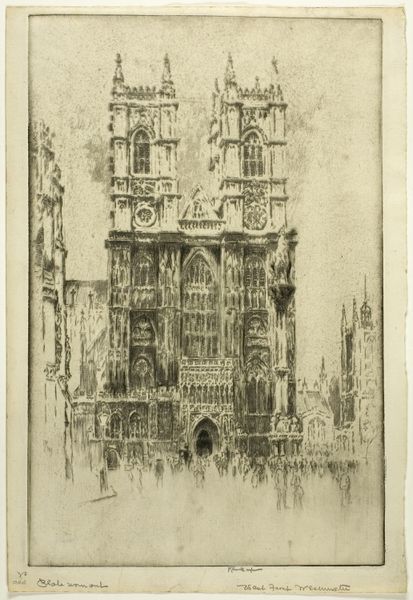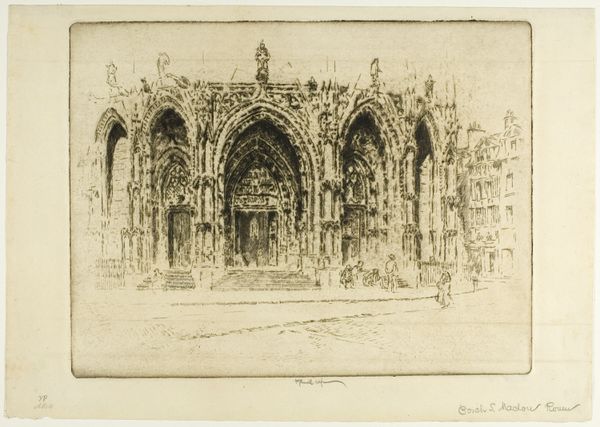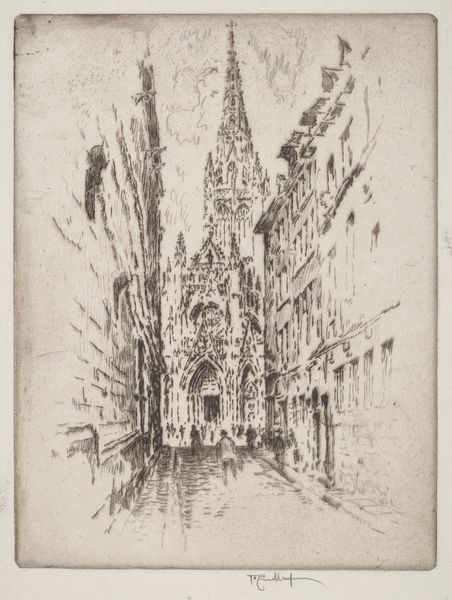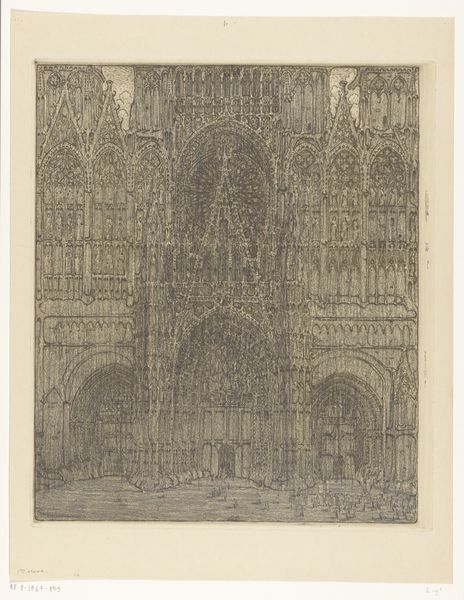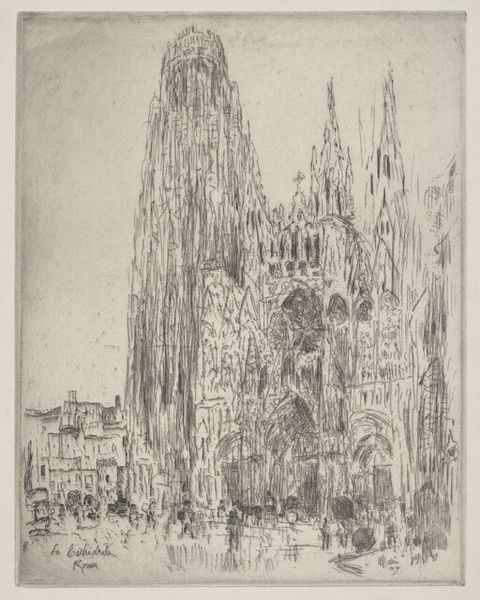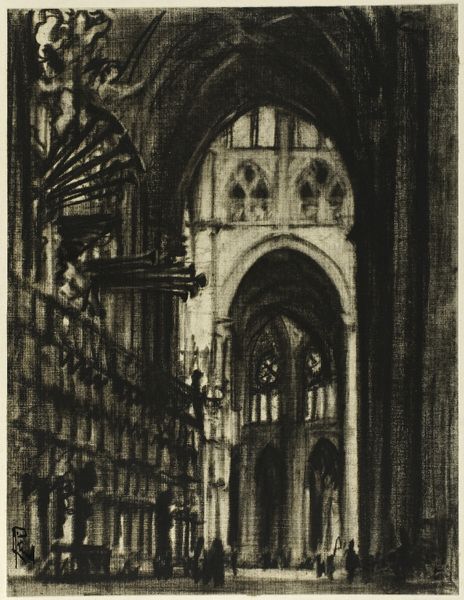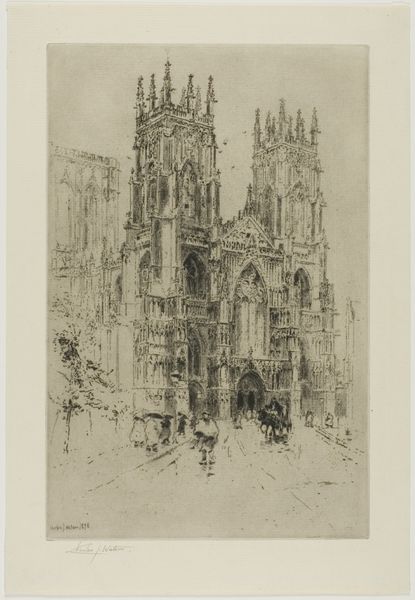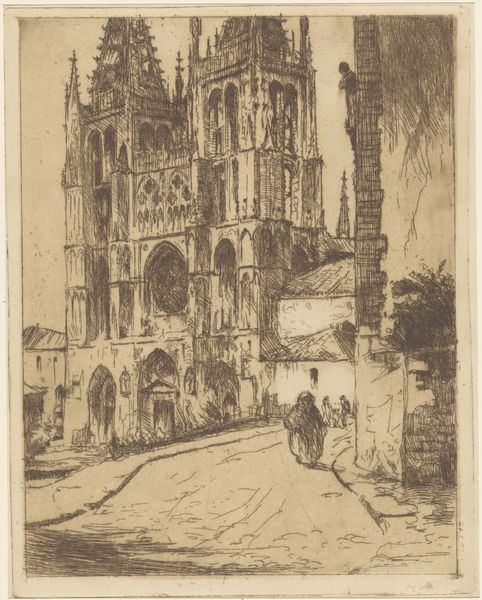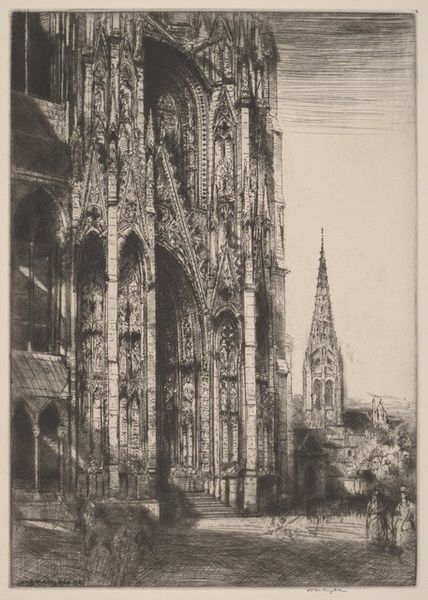
drawing, print, etching, paper
#
drawing
#
medieval
# print
#
etching
#
landscape
#
etching
#
paper
#
cityscape
Dimensions: 278 × 203 mm (image); 301 × 205 (sheet)
Copyright: Public Domain
Curator: Here we have Joseph Pennell's etching, "South Door, Beauvais," created in 1907. Editor: Immediately I'm struck by the cathedral's overwhelming presence. It looms, doesn't it? The delicate etching technique gives it an almost ethereal quality, but still so powerful. Curator: That's fascinating, especially when considering the historical context. Beauvais Cathedral was built with the explicit intention to reach unprecedented heights, to surpass all others. This ambition, particularly during its time, connects to power, faith, and social hierarchies that determined who could access not just the physical space, but the spiritual one. Pennell captured that grand entrance. Editor: Yes, and consider the recurring motif of the archway throughout history and across cultures: it is symbolic of transition, a portal to the divine or the unknown. The intricate carvings, too, serve as mnemonic devices, prompting stories. This doorway seems both welcoming and guarded. Curator: Absolutely. Notice the figures Pennell includes at the base, these men and women going about their day juxtaposed against such an imposing backdrop really calls to question who has the true dominion, humanity or god. What power is projected and what power is wielded? Pennell almost certainly felt that contradiction acutely living in this new world and portraying a centuries-old symbol of rigid social codes. Editor: And think about the light! How it dapples across the stone, seemingly reflecting the spiritual light emanating from within. Curator: Which brings us to considering Pennell as an American, etching the imprint of French society and space and speaking about how even in his own modernity of thought he's still confronted by Medieval systems of being. The way the light shines, seemingly highlighting the facade, does he mean it with some cynicism? How have the powerful obscured their intention to do harm behind religious guise? Is he bringing in this new secular age? Editor: That's where this work holds so much appeal—its power lies in these complex symbolic and layered historical readings. Curator: It certainly offers many threads for us to unpack about faith, power, and identity, doesn't it? Editor: Indeed, it allows us a glimpse into our layered memory of shared sacred space.
Comments
No comments
Be the first to comment and join the conversation on the ultimate creative platform.

